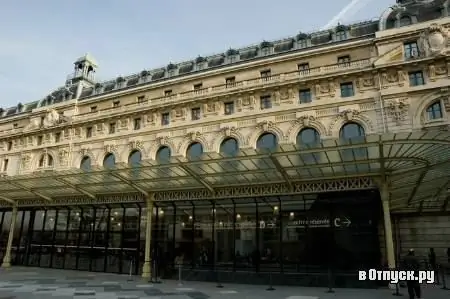
Description of the attraction
The D'Orsay Museum would not exist at all if it were not for the wisdom of French President Georges Pompidou.
In 1898, on the Seine River, on the site of the Court of Accounts destroyed by the revolution, the world's first electrified station of the Paris-Orleans railway company appeared. Architect Victor Laloux was fully aware of his responsibility: the building was being built in the very center of Paris, opposite the Tuileries. The station with 16 platforms, hotel and restaurants is great. The facade on the embankment is decorated with stone arcades. Inside, all metal structures are hidden by white marble. Two side pavilions are decorated with a huge clock.
The station was built for the International Exhibition of 1900, but its life turned out to be short: by 1939, trains no longer ran from here.
In 1971, it was decided to demolish the building. This was opposed by President Georges Pompidou, an art connoisseur, literary critic and teacher of literature. By his decree, the building was declared a monument. Under President Giscard d'Estaing, the reconstruction of the station began. In 1986, a museum was opened here.
Its theme was defined as follows: a museum of arts and crafts of the second half of the 19th - early 20th centuries. Thus, d'Orsay fills the chronological gap between the collections of the Louvre and the Museum of Contemporary Art at the Georges Pompidou Center.
At the heart of d'Orsay is a splendid collection of Impressionist paintings. It is here that the forerunner of Impressionism, the captivating "Olympia" by Edouard Manet, is exhibited, which at one time caused a monstrous scandal. The exhibition features paintings by such masters as Van Gogh, Gauguin, Degas, Corot, Courbet, Pizarro, Renoir, Signac, Toulouse-Lautrec, Ingres. Their works are exhibited on the upper, third floor, where visitors immediately rush. The interior of the museum with its colossal spaces makes a strong impression.
D'Orsay's exposition is organized according to the principle of “no hierarchy of artistic values”: paintings by little-known artists are exhibited next to the works of the greats. The museum is also willing to host temporary exhibitions. For example, the exhibition "The Last Portrait" made it possible to see the death masks of outstanding artists - Beethoven, Wagner, Edith Piaf, Mahler.






